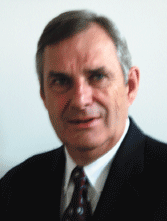Risky Positions With Keith Fitschen Of TradeSystem
Keith Fitschen has been developing technical trading systems for the futures markets for 20 years, actively trading his systems. His initial research was on the quantification of curve-fitting in system development and resulted in a methodology that relates the degree of overfitting to the number of trades in the development sample. With this method he developed the mechanical system Aberration. Developed in 1986, it was commercially released in 1993 and has been feted as one of the top 10 trading systems by Futures Truth. Fitschen also developed the Start-Trade Drawdown criteria, which is a better measure of risk to a small-account trader than traditional drawdown metrics.
Fitschen, who has a master's degree in electrical engineering (with an emphasis on stochastic estimation), has developed guidance systems for tactical air-launched weapons and acoustic tracking systems. This expertise in noisy time series data has led to his success in developing trading systems for noisy market data. He is the president of TradeSystem and provides trading system information on his website, www.keithstrading.com.
STOCKS & COMMODITIES Editor Jayanthi Gopalakrishnan spoke to Keith Fitschen on June 5, 2007, via telephone.

Keith, how did you get interested in trading?
I was in the Air Force and I had a degree in electrical engineering. The Air Force decided to send me to graduate school. When I showed up, my advisors said, "You are going to take something called stochastic estimation." I didn't know what that was, so I suggested I should perhaps do something digital. They said, "No. This is what you are going to do." So I got the degree.
What is stochastic estimation?
It's the science of extracting information from noisy time series data. When I got done, I used my advanced degree to build guidance systems for tactical weapons. Then I started thinking that the noisiest data around with information in it is trading information. So I got interested in the financial markets. I started to build trading systems and collecting data, and my interest evolved from there.
How many years have you been designing trading systems?
Since the early 1980s. I got a Sanyo computer with 64K RAM about 1981. What you could do on it was primitive by today's standards, but that is how most people did it back then.
So were you trading while you were in graduate school, or before that?
I got my degree in 1976. I didn't start trading until 1981 or 1982.
What drew you to trading? Was it commodities all the time, or did you trade other things as well?
I started with commodities. I never was an equity trader. I had heard it was a zero-sum game, which means somebody wins and somebody loses the exact same amount, except for commissions. That concept appealed to me. I think most commodity traders like the idea of "me against the other guy." So I looked into that and went from there.
Did somebody introduce you to commodities, or was it something you heard about and went into on you own?
I didn't know anything about commodities when I started. I bought some
data and then started collecting data from The Wall Street Journal
each day for the commodities. I started designing systems before I ever
traded. And when I thought I had something, I would trade it.
...Continued in the August 2007 issue of Technical Analysis
of STOCKS & COMMODITIES
Excerpted from an article originally published in the August 2006
issue of Technical Analysis of STOCKS & COMMODITIES magazine. All rights
reserved. © Copyright 2006, Technical Analysis, Inc.
Return to August 2007 Contents